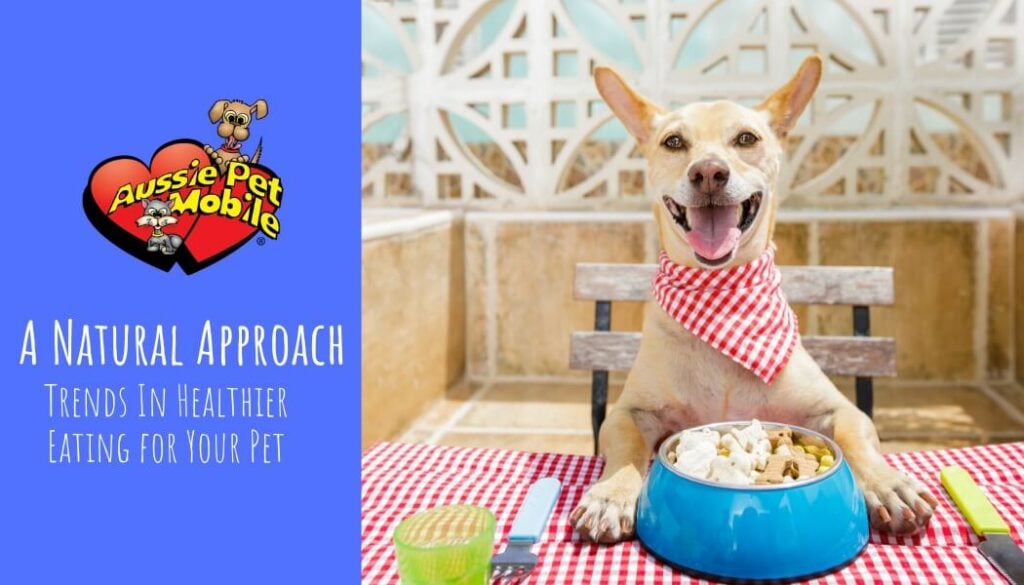A Natural Approach Trends In Healthier Eating for Your Pet

Dog owners have stepped it up in recent years when it comes to complete care. Gone are the days of throwing scraps from the table to the floor. Premium pet foods have caused soaring costs for many canine owners and given birth to homemade, natural foods for pets.
Just like people-food, quality comes at a cost. And while throwing your dog a bone from the table is advised against, people are beginning to explore making their own dog foods to both cut costs while also providing a premium diet for their furry friends.
Here are some basics if you want to give this a try. And – as always – consult your veterinarian and credible online resources for any safety issues.
- Natural Treats to Share
If you look at the contents of quality dog foods you will notice blueberries, carrots, green beans, pumpkin, and papaya just to name a few. This means these can also be given to your dog as a natural, healthy treat. If you share a blueberry, break the skin to prevent any choking hazards. Carrots are a great treat that simply passes through their system but provides great flavor and crunch. Sometimes the bitterness in the skin will cause picky dogs to leave the carrots untouched, so peeling them is a good idea. Many dog owners have found frozen green beans to be a wonderful treat (after all, how many dogs love it when an ice cube falls to the ground?). All of these natural treats should be given in moderation but usually provide a low-calorie, healthy alternative to treats you might find in the story. Similarly, apples provide crunch and flavor many dogs love. Removing the skin is key for many dogs and takes very little time to do. Many dog owners enjoy sharing in this way as they hang out with their pets. - Natural Treats to Avoid
“Love the Garden” online magazine has a great list of fruits and veggies to avoid. They include grapes, raisins, avocados, mushrooms, nuts, unripe tomatoes, onions (all varieties and variations), garlic, broccoli, rhubarb, and persimmons. Many of these have leaves or seeds that cause the side effects, but it’s better to avoid them altogether. A good rule of thumb is to only give fresh fruits and veggies you have confirmed are healthy for a dog’s nutrition. - Prepared Meats for Your Dog
Many types of meat can be prepared for your dog if you remember to avoid adding salt or artificial flavors. Natural should be natural when it comes to dogs. Remember, dogs have far fewer taste buds than humans, so don’t “kick it up a notch” when you prepare meat for them. WebMD for Pets gives these guidelines every pet owner should pay attention to:- Always cook meat well. Never serve it raw or undercooked.
- Avoid fatty cuts, including bacon.
- Cut meat — and any human food — into easy-to-chew chunks. Ground meat is fine, too.
- Old, moldy, or spoiled meats are not OK.
- You will also notice a lot of online information about raw meats being healthy for pets. Research this topic thoroughly before making this decision (and speak with your veterinarian).
One last thought: Healthy snacks for your pet are often healthy snacks for you. If the whole family wants to encourage healthy menus, teaming up with your dog is a great way to make a change. Enjoy the summer and enjoy healthier snacking for everyone.